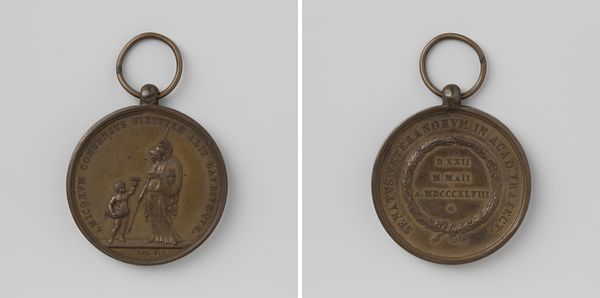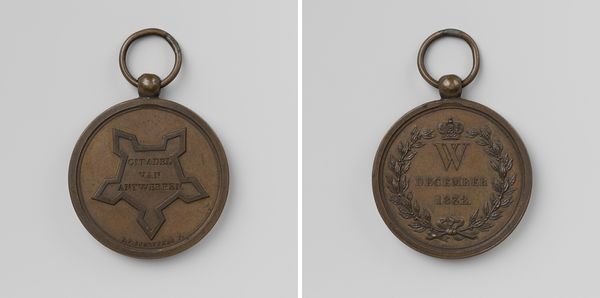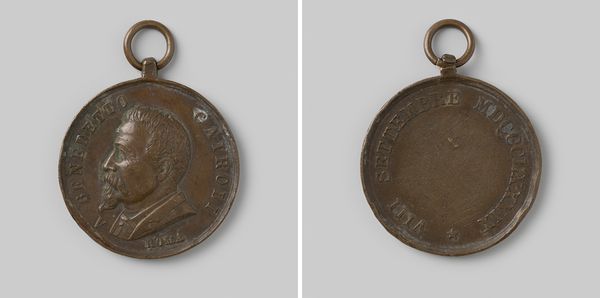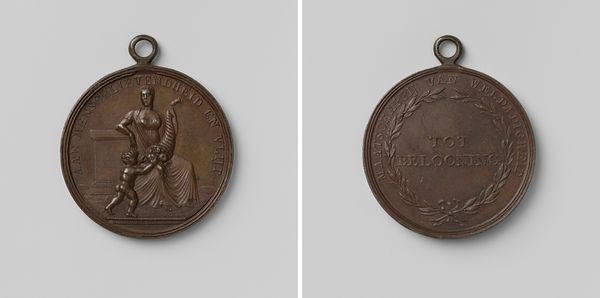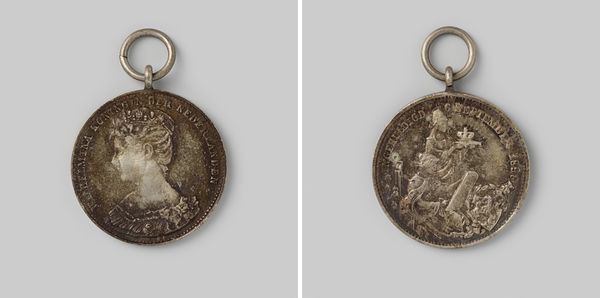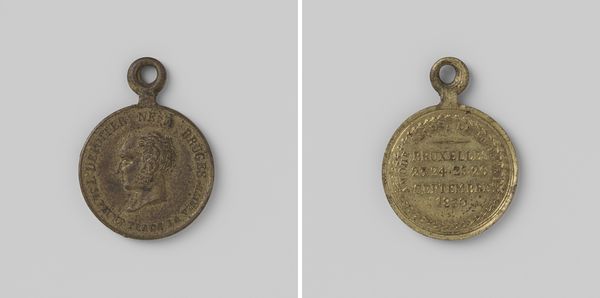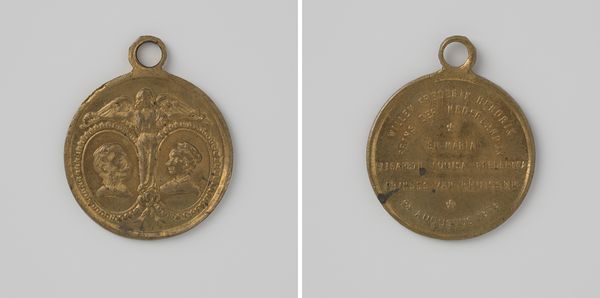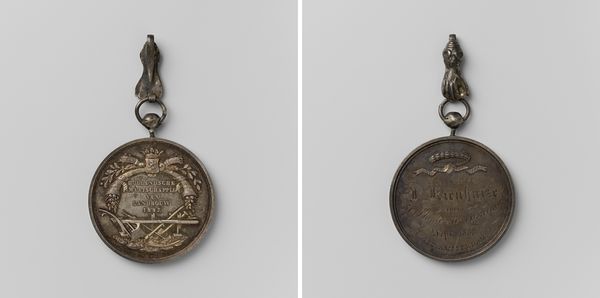
Oorlog op Java, groot draagteken uitgereikt aan de deelnemers, ter ere van Willem I Frederik, koning der Nederlanden 1830
0:00
0:00
davidvander18041879kellen
Rijksmuseum
metal, bronze, sculpture
#
portrait
#
medal
#
neoclacissism
#
metal
#
bronze
#
historical fashion
#
sculpture
#
history-painting
Dimensions: length 4.4 cm, length 3.5 cm, length 3 cm, width 3 cm, weight 16.41 gr
Copyright: Rijks Museum: Open Domain
Editor: This is a bronze medal, created in 1830 by David van der Kellen, titled "Oorlog op Java, groot draagteken uitgereikt aan de deelnemers, ter ere van Willem I Frederik, koning der Nederlanden" which translates as "War in Java, large insignia awarded to the participants, in honor of Willem I Frederik, King of the Netherlands". It seems quite neoclassical, almost stoic, in its design. How should we interpret this work beyond its surface? Curator: Beyond the stoic surface lies a complex narrative about power, colonialism, and remembrance. The medal commemorates a brutal war in Java between 1825 and 1830. It wasn’t just a war; it was an act of colonial dominance by the Dutch. How do we reconcile the seemingly neutral depiction of King Willem with the violent realities of that conflict? Editor: I see what you mean. It’s easy to just see a historical object, but not to think about what it really represents. Curator: Exactly! The medal is not just a historical artifact; it's a statement, a carefully constructed piece of propaganda. Who was this medal made for? What message did the Dutch monarchy want to convey? This glorification obscures the suffering inflicted upon the Javanese people, making it crucial to question the one-sided historical narrative it promotes. Editor: So, understanding the historical context really shifts our interpretation. What initially seemed like a simple commemorative object becomes a loaded symbol of colonial power? Curator: Precisely! We must engage with the silences, the voices that are missing from this object. It is a critical dialogue between art, history, and the enduring legacy of colonialism. By understanding its role in shaping and solidifying Dutch authority, we can develop a far more balanced and responsible point of view. Editor: That gives me a lot to think about. I see now that interpreting art involves interrogating the power dynamics it reflects. Thank you. Curator: And thank you for bringing your fresh perspective to this challenging yet necessary conversation.
Comments
No comments
Be the first to comment and join the conversation on the ultimate creative platform.
